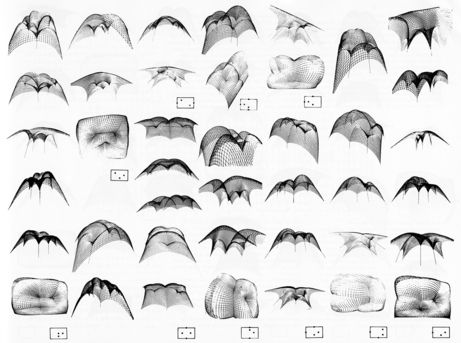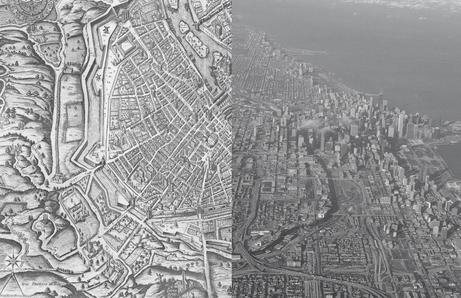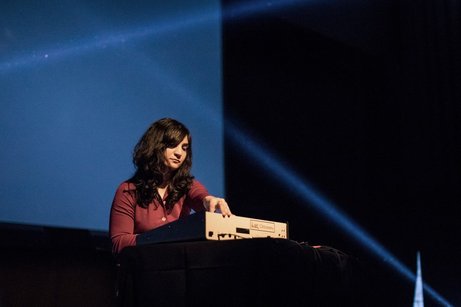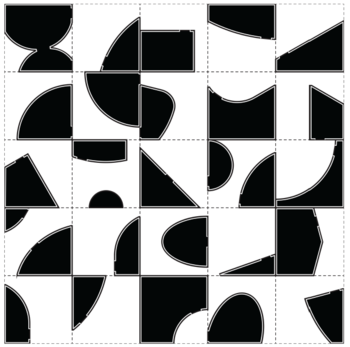Automatic Architecture
Sean Keller
May 23, 2018
(6pm)
Book Launch
Please RSVP
Join us for a talk by Sean Keller to launch his new Graham-funded book Automatic Architecture: Motivating Form after Modernism recently published by University of Chicago Press.
Automatic Architecture examines architects’ enthusiasm for autonomic design methods in the 1960s and 1970s. Influenced by the new science of computing, these architects tried to replace individual intuition with methods that were thought to be objective, logical, or natural. The book closes with an analysis of our contemporary condition, suggesting paths for architectural practice that work through, but also beyond, the merely automatic.
Sean Keller is a historian and critic of modern and contemporary architecture. His writing has been recognized by a Winterhouse Award for Design Writing and Criticism and by a Warhol Foundation Grant. He is the author of Automatic Architecture: Motivating Form After Modernism (University of Chicago Press, 2018); and is currently completing a book on the art and architecture of the 1972 Munich Olympics (forthcoming, with Christine Mehring, Yale University Press).
Keller is Associate Professor, Associate Dean of Research, and Director of the MS program at the IIT College of Architecture. He has taught at the University of Chicago, Yale University, and Harvard University. He is a Fellow of the Neubauer Collegium and formerly a Residential Scholar of the Franke Institute for the Humanities, both at the University of Chicago. He is a trustee of the Graham Foundation.
Image: Grid-shell forms determined by hanging chain nets, the Institute for Lightweight Structures, Stuttgart, 1974. Courtesy of ILEK, University of Stuttgart.

Entangled Urbanisms: History, Place, and the Shaping of Cities
Reinhold Martin, Nancy Steinhardt, and Kenny Cupers
May 17, 2018
(6pm)
Please RSVP
This symposium will bring together a roster of international scholars to examine challenges and opportunities presented by the comparative study of cities across the globe from the sixteenth century to the present. The opening panel discussion at the Graham Foundation will feature Reinhold Martin, Nancy Steinhardt, and Kenny Cupers.
Reinhold Martin is Professor of Architecture at the Graduate School of Architecture, Planning, and Preservation at Columbia University and Director of the Temple Hoyne Buell Center for the Study of American Architecture.
Nancy Steinhardt is Chair of the Department of East Asian Languages and Cultures at the University of Pennsylvania and Professor of East Asian Art in Penn’s History of Art Department.
Kenny Cupers is Head of Urban Studies and Professor of History and Theory of Architecture at the University of Basel, Switzerland.
Ayala Levin, Assistant Professor in the Department of Art History at Northwestern University, will moderate the panel.
The symposium continues on May 18 at the Northwestern University Library in Evanston. The event at Northwestern is free but separate registration is required. To register for the full symposium, click here.
Image: Left: Vassallieu dit Nicolay, Map of Paris, 1609. Bibliothèque national de France, Paris; right: Aerial view of Chicago. Jesús Escobar

Torkwase Dyson, “Looking for the People (Water Table Ocular #3),” 2017. Polymer gravure on Hahnmuhle Copperplate White paper. Published by Brodsky Center. Collaborating Master Printer Randy Hemminghaus. Photograph courtesy of Brodsky Center. Copyright Torkwase Dyson and Brodsky Center. Photo by Peter Jacobs
Opening Reception: Torkwase Dyson and the Wynter-Wells School
May 03, 2018
(6pm)
Please RSVP
Please join us for a reception with artist Torkwase Dyson as we celebrate the opening of her new installation.
Torkwase Dyson, born in Chicago, is an artist based in New York whose practice draws on her interest in abstraction, social architecture, and environmental justice. She began engaging social architecture through her project Studio South Zero (2014–ongoing), a mobile studio that relies on solar power and supports multidisciplinary artmaking. Recent solo exhibitions of Dyson’s work have been presented at the Drawing Center, New York City; Landmark Gallery, Texas Tech University, Lubbock; Eyebeam, Brooklyn; and the Meat Market Gallery, Washington, DC. Her work has also been included in exhibitions in New York at the Whitney Museum of American Art; the Studio Museum in Harlem; Martos Gallery; Postmasters Gallery; and We Buy Gold, Brooklyn as well as at the Schuylkill Center for Environmental Education, Philadelphia, and the National Museum of African Art, Washington DC. Dyson’s work has been supported by the Joan Mitchell Foundation; Nancy Graves Foundation; Nicholas School of the Environment, Duke University; and the Lower Manhattan Cultural Center. She is on the board of the Architectural League of New York and is a visiting critic at the Yale University School of Art. She is represented by Davidson Contemporary, New York; and Rhona Hoffman Gallery, Chicago.
For more information on the exhibition, Wynter-Wells School, click here.

Sarah Davachi
Lampo Performance Series
Apr 21, 2018
(8pm)
RSVP Required
Canadian composer Sarah Davachi returns to Chicago and presents new work for reed organ, violin, viola da gamba and electronics. Based upon variously displaced melodic movements that were originally developed through a series of improvisations for pipe organ, this piece attempts to balance instances of consonance and dissonance, both in frequency content and physical gesture between its three players.
The open strings of the violin and viola da gamba—a Renaissance-Baroque instrument with seven strings tuned in a manner similar to the lute and modern guitar—are often isolated in order to fully emphasize the natural harmonics of the resonating body. The electronic component, originally derived from an EMS Synthi synthesizer, reinforces many of these pitches but occupies a subtle and unstable presence in the mix, slightly blurring the source of the effect.
Joining Davachi in this performance are Chicagoans Whitney Johnson on violin and Phillip Serna on viola da gamba.
Sarah Davachi (b.1987, Calgary, Canada) is a composer of electronic and electroacoustic music. Trained at Mills College, she is engaged in practices of analog synthesis, psychoacoustic manipulations, multi-channel sound diffusion, and studio composition. Her compositional projects are primarily concerned with disclosing the antiquated instruments and forgotten sonics of a bygone era in synthesis, with concurrent treatment of acoustic sources—particularly organs, strings and woodwinds. Since 2007, she also has worked for the National Music Centre in Canada as a researcher and archivist of their collection of acoustic and electronic keyboard instruments. She has held artist residencies at the Banff Centre for Arts; EMS, Stockholm; OBORO, Montreal; and STEIM, Amsterdam. Davachi currently lives in Los Angeles, where she is a doctoral student in musicology.
Sarah Davachi made her Chicago debut at Lampo in January 2017, with a new composition for vintage synthesizers, harmonium and two cellos.
Since 2010 the Graham Foundation has supported and partnered with Lampo to produce this performance series held at the Madlener House. Lampo, founded in 1997, is a non-profit organization for experimental music and intermedia projects.

Dysfunctional Plans
Fosco Lucarelli
Apr 19, 2018
(6pm)
Talk
Please RSVP
Renewed Archetypes, Endless Enclosure, Mystical Grid, Transient Monument, Inhabitable Wall, Dysfunctional Plan
Join us for a talk by Fosco Lucarelli, the 2017–18 Douglas A. Garofalo Fellow from the University of Illinois at Chicago (UIC) School of Architecture.
Dysfunctional Plans is a theoretical inquiry based on seven design exercises made in collaboration with a group of Lucarelli’s students. The project’s unwieldy brief provides no a priori function, content, strategy, site, or hypothetical condition apart from the arbitrary definition of seven oxymoronic images.
More an experiment than a manifesto, this talk and accompanying exhibition at UIC questions whether architecture might be a discipline autonomous enough to create its own narrative, content, function, purpose, and imagination—and therefore, meaning—stemming solely from its bare form.
Fosco Lucarelli is an Italian architect and educator based in Paris. He holds a Bachelor and Master of Architecture from the School of Architecture of Rome (Roma Tre) and from the ETSAM in Madrid. With his partner Mariabruna Fabrizi, he co-founded the architectural practice Microcities, and conducts independent research through the website SOCKS. He has taught at the École d'architecture de la ville et des territoires in Marne-La-Vallée in Paris, and at the École Polytechnique Fédérale in Lausanne. Together with M. Fabrizi, Lucarelli was the content-curator for "The Form of Form", the main exhibition at the 2016 Lisbon Architecture Triennale, and he is part of the chief curatorial team for the 2019 Lisbon Triennale.
About the Douglas A. Garofalo Fellowship
Named in honor of architect and educator Doug Garofalo (1958–2011), this nine-month teaching fellowship—supported with a grant from the Graham Foundation—provides emerging designers the opportunity to teach studio and seminar courses in the undergraduate and graduate programs and conduct independent design research. The fellowship also includes a public lecture at the Graham Foundation and an exhibition at the UIC School of Architecture. To learn more about the fellowship, click here.






 PREVIOUS POSTS
PREVIOUS POSTS